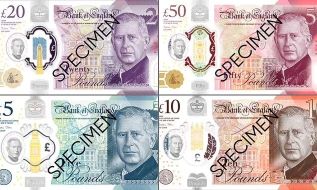BPS: Ekonomi Indonesia Tumbuh 5,78% pada 2013
National Statistics Agency: Indonesia`s Economy Grows 5.78 Percent in 2013
Reporter : Gatot Priyantono
Editor : Ismail Gani
Translator : Novita Cahyadi
 b.jpg)
Jakarta (B2B) - Badan Pusat Statistik (BPS) mencatat perekonomian Indonesia secara kumulatif tumbuh 5,78% pada 2013.
"Pertumbuhan terjadi pada semua sektor ekonomi, dengan pertumbuhan tertinggi di sektor pengangkutan dan komunikasi sebesar 10,19 persen," kata Kepala BPS Suryamin di Jakarta, Rabu.
Sektor lain mengalami peningkatan sepanjang tahun 2013, menurut dia, adalah sektor keuangan, real estate dan jasa keuangan yang tumbuh 7,56%; sektor konstruksi yang tumbuh 6,57%; serta sektor perdagangan, hotel dan restoran 5,93%.
Suryamin menjelaskan, pertumbuhan Produk Domestik Bruto (PDB) triwulan IV-2013 dibandingkan triwulan III-2013 turun 1,42% namun bila dibandingkan dengan triwulan IV-2012 tumbuh 5,72%.
Ia menambahkan menurut pengeluaran perekonomian Indonesia 2013 didukung oleh komponen ekspor yang tumbuh 5,3%, konsumsi rumah tangga tumbuh 5,28%, konsumsi pemerintah tumbuh 4,87%, pembentukan modal tetap bruto tumbuh 4,71% dan impor tumbuh 1,21%.
"Ekspor membaik, karena pengaruh kebijakan pemerintah yang efektif dan pelemahan nilai tukar. Sedangkan, pembentukan modal tetap bruto menurun, karena ada penurunan impor barang modal seperti mesin, yang dibutuhkan untuk produksi. Ini mempengaruhi investasi," kata Suryamin.
Struktur PDB tahun 2013 masih didominasi oleh pengeluaran konsumsi rumah tangga yang tumbuh 55,82%, pembentukan modal tetap bruto (tumbuh 31,66%), ekspor (tumbuh 23,74%), impor (tumbuh 25,74%) dan konsumsi pemerintah (tumbuh 9,12%).
Suryamin menjelaskan, besaran PDB Indonesia tahun 2013 atas dasar harga berlaku mencapai Rp9.084 triliun, sedangkan atas dasar harga konstan (tahun 2000) mencapai Rp2.770,3 triliun.
Sementara PDB per kapita atas dasar harga berlaku pada tahun 2013 mencapai Rp36,5 juta atau senilai US$3.499,9, meningkat 8,88% dibandingkan PDB per kapita pada tahun 2012.
Struktur perekonomian secara spasial pada 2013 masih didukung Jawa yang memberikan kontribusi 57,99% terhadap PDB serta Sumatera yang memberikan sumbangan 23,81% terhadap PBD.
Selain itu ada kontribusi dari Kalimantan (8,67%), Sulawesi (4,82%), Bali dan Nusa Tenggara (2,53%) serta Maluku dan Papua (2,18%).
"Secara kuantitatif, kegiatan-kegiatan di sektor sekunder dan tersier masih terkonsentrasi di Jawa, sedangkan kegiatan sektor primernya lebih diperankan oleh wilayah di luar Jawa," kata Suryamin.
Jakarta (B2B) - The Indonesian economy grew 5.78 percent in 2013 and was marked by an improvement in the economic performance across various sectors, revealed the National Statistics Agency (BPS).
"Growth was recorded in all economic sectors with the communication and transportation sector in the lead, recording a 10.19 percent growth," BPS Chief Suryamin stated here on Wednesday.
He noted that during the year 2013, the financial, real estate, and financial service sectors recorded a growth of 7.56 percent.
In the meantime, the construction sector grew 6.57 percent, while the trade, hotel, and restaurant sector showed a 5.93 percent growth, he pointed out.
The GDP growth in the fourth quarter of 2013 was down 1.42 percent from the third quarter, but in comparison to that of the same period in 2012, it grew 5.72 percent.
The GDP growth, excluding oil and gas, was recorded at 6.25 percent, which was higher than the national GDP growth.
Suryamin explained that based on expenditures, Indonesias economic growth in 2013 was driven by exports that grew 5.3 percent, household consumption increased 5.28 percent, government spending climbed 4.87 percent, gross fixed capital formation rose 4.71 percent, and imports increased 1.21 percent.
"Exports are improving due to effective government policies and depreciation of the rupiah exchange rate. In the meantime, the gross fixed capital formation was down because of a drop in capital goods imports such as machinery required for production. This has affected investment," he pointed out.
Suryamin emphasized that the GDP structure in 2013 is still dominated by household spending that grew 55.82 percent, gross fixed capital formation rose 31.66 percent, exports increased 23.74 percent, imports rose 25.74 percent, and government spending increased 9.12 percent.
The BPS chief elaborated that Indonesias GDP in 2013, based on current prices, reached Rp9,084 trillion, while it reached Rp2,770.3 trillion based on constant prices.
The GDP per capita based on current prices in the year reached Rp36.5 million or US$3,499.9, up 8.88 percent, as compared to that of 2012, which was recorded at Rp33.5 million or US$3,583.2.
Spatially, the countrys economic structure in 2013 was still mostly supported by Java, which contributed 57.99 percent, followed by Sumatra with its contribution at 23.81 percent, Kalimantan 8.67 percent, Sulawesi 4.82 percent, Bali and Nusa Tenggara 2.53 percent, Maluku and Papua 2.18 percent.
"Quantitatively, the economic activities in the secondary and tertiary sectors are still concentrated in Java, while the economic activities outside Java are concentrated more in the primary sector," Suryamin added.















